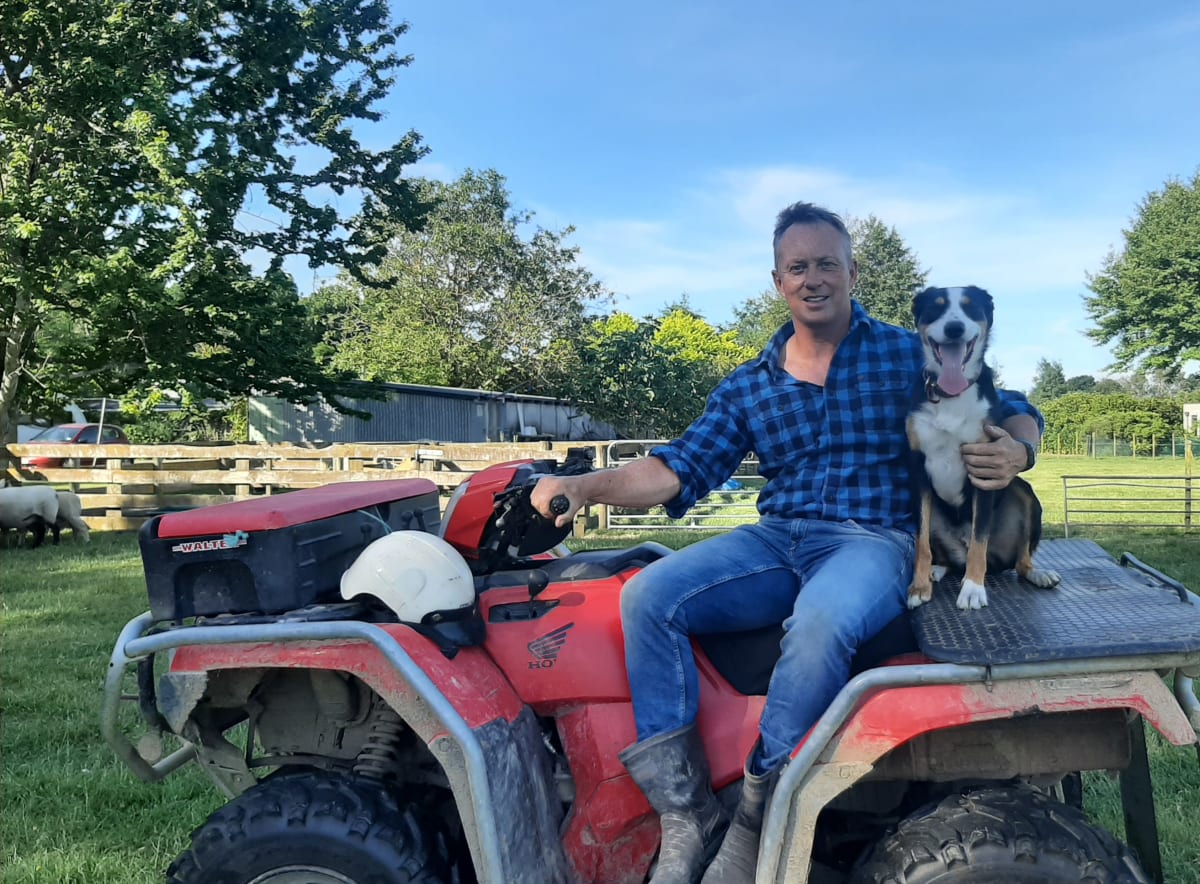
Wool is natural, sustainable, biodegradable and versatile but NZ’s coarse wool industry is in more dire trouble than ever - a situation a new three-year strategy hopes to change
It costs your average New Zealand farmer around $3 a kilo to shear your average New Zealand coarse-wool (not merino) sheep. That same average farmer will receive as little as $2 a kilo for that wool – a third of what they would have got five years ago.
That’s seriously flawed economics: a loss of up to $1 a kilo (or $160 a bale) for a product that was once the mainstay of the New Zealand economy. It’s lucky for farmers that sheep produce meat too.
READ MORE: * Farmers look to ride on the sheep’s back once again * Emissions advice not so anti-farming as you’d think
Covid has played a part in the collapse of the wool market in recent times. Port closures and other supply disruptions meant China, our biggest buyer by some way, imported $100 million-worth less wool in 2020 than in 2019, a drop of 40 percent.
The decline continued in 2021, with total Chinese wool exports (not just from New Zealand) falling 17 percent last year.

But it’s not just Covid, and it’s not just China. As the chart below shows, three of our top five wool export markets fell between 2018 and 2020.
Beyond Covid, the biggest problem for the wool industry is the huge rise in production and use of synthetics. Whether it’s clothes, carpets, upholstery, bedding, even insulation, we love our cheap, easy-to-clean, synthetic products.
And we mostly don’t think about – or don’t know – the fact fibres such as polyester, nylon or polypropylene are made from synthesised chemicals derived from crude oil, making industries such as fashion and carpet manufacturing huge consumers of fossil fuels and equally huge emitters of greenhouse gases.
NZ top 5 wool export markets (NZ$m)
Oil-based synthetics now make up 62 percent of worldwide fibre consumption, according to market research commissioned by the Campaign for Wool NZ. Meanwhile, production of plant-based fibres known as cellulosics is also increasing.
It’s a vicious cycle. As more people bought synthetic fibres and fewer bought strong (coarse) wool, the price ratio between the two got worse. Around 1:3 in the 1990s, it has risen closer to 1:5.
“Wool cannot compete in volumes,” the Campaign for Wool report says. “It must compete in product quality and fibre attributes."

This week the campaign's three-year strategy (2023-2025) aimed at changing the fortunes of strong wool is launched. In particular, the not-for-profit wants to promote wool as the material of choice for climate-conscious consumers wanting to reduce their carbon footprint in terms of the clothes they wear and the materials they use to build and furnish their homes.
“For the last 10 years, consumers have been obsessed with plastic and cheap synthetic alternatives,” says Tom O’Sullivan, former Campaign for Wool chair, now its new general manager of advocacy. “We are starting to see a movement from discerning consumers looking at the provenance of what they are buying.
“Our strategy is to shift people to buying wool by helping commercial entities produce cool wool-based products.”
Things are happening, O’Sullivan says. Companies making stuff out of plastics and synthetics are starting to enquire about whether there isn’t a wool-based product they could use instead. And the volume of interest has picked up over the past six months
“Businesses are seeing a threat from being aligned with petrochemical products; they don’t want to be tarnished because their products aren’t environmentally friendly.”
O’Sullivan says the merino wool industry has done a good job lifting the profile - and price - of fine wool by focusing largely on clothing. But he thinks strong wool has a good opportunity in architecture, furnishings and interior design.

Take Wisewool, set up in 2021 by two great-great-grandsons of 19th Century Gisborne wool scourer William H Smith as a way to lift the fortunes of the family business after years of “despairingly low” wool prices.
Wisewool makes wool “buds” - small balls of wool that work as a loose fill alternative for furniture. They also produce needle-punched wool blanketing for duvet inners and high-end furniture.
One of Wisewool’s early customers is Wānaka-based home decor company Wilson & Dorset, whose sheepskin cushions and bean bags will now be filled with wool not synthetics.
Meanwhile, T&R Interior Systems - which make ceiling tiles, wall panels and partitioning - have just launched a range of 100 percent wool acoustic tiles and wall liners under the Floc brand.
Technical director Hedda Landreth says the germ of the idea came when the company was involved in a ‘Living Building’ sustainable construction project and discovered a polyester acoustic tile was being recommended.
“It was seen as the best option because it used recycled polyester. But it was only 60 recycled and it’s still basically made of plastic. It was an eye-opener.”

Landreth and the team got working on a wool panel, but their original product didn’t pass the building industry fire resistance test. Adding a chemical retardant would have defeated the object of the exercise, so they kept working on a natural product they could add. And after 49 failed tests, they eventually found one, Landreth says.
“The fibre is still 100 percent wool and the additive is fully compostable and natural. It took a year of intensive work to get there.
Floc panels hit the market last month and Landreth says it’s the right product at the right time.
“It’s been one of the easiest products I’ve ever launched. We are mainly selling to architects, and it’s got them really excited. There’s an appetite to use more sustainable, zero carbon products. There’s also a wellness aspect to natural products as opposed to synthetics, which people are interested in.”

Stephen McDougall is founding director of Studio Pacific Architecture and a fierce advocate for the use of wool in buildings.
He says as well as its acoustic properties wool has great breathability and is effective at absorbing and releasing moisture without reducing thermal performance.
By contrast, petroleum-based materials are more toxic, less fire resistant, generally non-biodegradable and difficult to dispose of.
But wool has disappeared off the radar of most architects and builders over the past 20 years, “smashed by synthetics and their massive marketing budgets”.
At the same time the decision by farmers in 2004 to dissolve the Wool Board left the sector without a well-resourced body promoting wool.
“It’s incredibly depressing how long the industry has not had a governing board; since then there have been a lot of factions.”
McDougall says in recent times the wool industry has largely ignored the role of architects and designers, despite them being critical in specifying which materials are used in construction and refurbishment, both inside and outside a building.
“My role is to educate my peers and colleagues and encourage them to consider wool in their selection.”

He says the move by carpet maker Cavalier Bremworth to stop selling synthetic carpets and move to 100 percent wool has put a grunty marketing budget behind the product.
Now he wants Kāinga Ora to put its procurement clout behind using more wool and fewer synthetics.
“I believe wool carpet, wool insulation and wool blinds would solve a significant amount of the health issues involved with our poor housing stock. Kids are living in houses which are wetter on the inside than the outside. Wool is a great absorber and non-allergenic.
“Sleeping in bedding that’s not plastic might help too.”
Government support through procurement would also be a good way to increase the wool clip and get prices up, McDougall says.
“There’s lots of innovation going into wool products like surf boards and coffins. But building is where you can get volume.”
Floc market research suggests 200,000 polyester acoustic panels are sold in New Zealand every year, mostly going into schools - where they often double as pin boards - and offices. “One panel is approximately one sheep,” Hedda Landreth says.
She says Floc’s wool boards are the same price as their polyester competitors, which should help when they enter the international market. “We’re working with NZTE.”
One of Campaign for Wool’s goals in its three-year strategy is getting wool building products certified and more council consenting bodies happy to see them on building plans, Tom O’Sullivan says.
Meanwhile, lobbying Government is going to be a big part of his newly created role, he says.
“Government says it’s environmentally friendly, but then it specifies a lot of fossil fuels and non-natural products in its government builds. They are spending millions on products which contradict their environmental position - like putting fibreglass insulation in public buildings and synthetic carpets on the floors.
“I’m going to be getting in front of key decision makers and telling them they can’t continue with purchasing practices that contradict their rhetoric.”
Competing factions
Then there’s perhaps the hardest, and perhaps most controversial part of O’Sullivan’s job - trying to come together with a splintered and factionalised industry to get coordinated change for the benefit of sheep farmers and the wool industry.
Campaign for Wool, with an annual budget of about $500,000 funded by a 1 cent per kilo levy from about 40 percent of industry players, is just one of four industry bodies working separately but with the same goal.
There’s Wool Impact “a collaboration between the Government and sheep sector partners under the Sustainable Food and Fibre Futures fund to grow export revenues for wool”.
Wool Impact is a $11.4 million, three-year programme with the industry contributing $6.9m and the Government $4.5m. The entity was launched in July this year after the Strong Wool Action Group recommended, in February, the formation of a new strong wool sector organisation.
Then there’s the Wool Research Organisation of New Zealand, tasked with generating opportunities for new ingredients to be developed made from New Zealand wool, with some funding from the Wool Board from when it was disestablished in 2004.
And there’s also the National Council of Wool Interests, the official New Zealand member of the International Wool Textile Organisation. Its main objectives “to foster wool production in New Zealand and promote the interests of the wool textile trade and industry in New Zealand”.
That’s on top of the commercial companies, including carpet makers Bremworth and Wools of NZ, and NZ Merino, which having rescued fine wool from the doldrums is now turning its gaze to strong wool.

“We need to be working towards a common strategy,” O’Sullivan says. “It will be so much more powerful if we are part of a master strategy with all the groups pulling in the same direction and avoiding duplication."
The first couple of years in the Campaign for Wool job had been frustrating, he says, but he thinks things are changing.
“It’s complicated, but if we can’t get together and show a different way forward, then farmer growers won’t be willing to support the strong wool industry.
“Also the Government has made it clear to me, they don’t want to see an industry that’s fighting amongst ourselves. They are watching to see if the industry can prove itself and move forward in a more proactive fashion, then it might be willing to contribute more.
“We need to get the right people round the table, and I feel more optimistic about that now than at any other time.”
And what does success look like? O'Sullivan doesn't want to put a number on the target, but a Rural News article in 2021 suggested farmers getting $4 or $5 a kilo for their coarser grade wool clip would see them cover shearing and other wool-related costs. $10 a kilo would start narrowing the gap between strong and merino wool. But don't hold your breath - it's been a couple of decades since farmers saw those sorts of prices.







